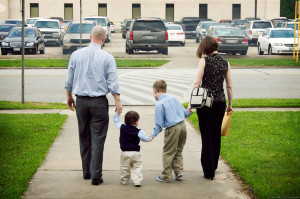
children being placed in loving families and out of the
foster system.
As adoption policies change throughout the world, the United States continues to struggle in attempting to allow an easier path for those who wish to adopt to do so.
A fundamental shift in how adoption is treated throughout the world has occurred over the last decade due to changes in adoption policies in other countries like China, Russia and South Korea.
The rate of international adoptions nearly doubled in the 1990s in the U.S., according to the Population Reference Bureau, and was quickly followed in the early 2000s by key acts intended to decrease the strain on those who chose to adopt internationally.
These included the Intercountry Adoption Act of 2000, which allowed for a much easier process to adopt internationally and the Child Citizenship Act of 2000, which created the opportunity for many children adopted abroad to automatically become U.S. citizens.
Such policies opened the floodgates to international adoptions as they lightened the burden on those seeking to adopt abroad.
The floodgates were also opened for terrible incidents of child abuse and neglect, including an international incident between the U.S. and Russia when a seven-year-old boy named Artyom Saleviev was flown back to Russia alone in 2010 by his adoptive U.S. mother Torry Hansen.
Artyom was sent back carrying a letter that simply stated his adoptive mother did not want him anymore.
The fallout from the incident led to a freeze on all adoptions of Russian children by U.S. parents. This ban is only now being lifted by the Russian government after nearly two years of investigations into the failures of prospective parent screenings and assurances that such an incident will not happen again, should U.S. parents adopt a Russian child.
Other countries have also placed more stringent limitations on adoption or created policies to encourage more domestic adoption within their country with Time Magazine pointing out that adoption from China has nearly been cut in half over the past decade.
For some prospective parents, the process for international adoptions even after these changes still seems easier than dealing with trying to adopt within the United States. The result is that out of the nearly 400,000 children in foster care in the U.S. the Department of Health and Human Services reports that only roughly 50,000 will be adopted.
Increased efforts must be made to decrease both the financial burden and vast amount of red tape bureaucracy, which stands in the way of successful adoptions. That means following through on continuing key policies, which have made the process easier while reforming those that hold it back.
Currently those who adopt can claim a tax credit of $12,360 for expenses paid to adopt a child but that credit is set to expire at the end of this year.
Rep. Bruce Baley (IA-I) introduced the Making Adoption Affordable Act of 2012 in an effort to both keep this tax credit in place and also to further expand upon it by raising the limit to $13,360.
While Rep. Baley should be commended on this important step more could be done to expand upon the policy as it is open to both domestic and international forms of adoption.
Instead the policy could be expanded to provide a tax credit of up to $23,500 to those who choose to adopt domestically.
Why that specific figure? It is approximately half of the estimated cost taxpayers foot each year to cover a single child in the foster care system and would represent, albeit symbolically, how much would be saved from a successful adoption.
Many counties and some state governments go even further with partial or full reimbursements from the state for adoption fees upon completion of a successful local adoption and could provide blueprints to lawmakers on how to effectively approach national policies on adoption.
Even with such increased financial incentives the sheer amount of bureaucratic red tape and time an adoption in the U.S. can take pushes people towards adopting abroad. Blanket reforms here will not work without a staggering cost to the lives of those children who are being placed into adoption.
As Artyom’s case exemplified, there are important reasons why parts of the screening and assessment process must remain in place. The thousands of individuals who work to ensure that children are adopted into safe homes must have those tools remain at their disposal.
Yet even minimal changes in the process can have a huge impact in ensuring a better balance between protecting children and encouraging more Americans to adopt locally.
The risk posed by not acting on this is an ever-increasing amount of children in the foster care system and matching costs to taxpayers as people continue to look more at adopting internationally.
It would mean a failure on our part to ensure that orphaned American children are afforded the opportunity to have a loving and caring family.
What kind of a society do we have if we can’t even provide such a basic opportunity for our children?











